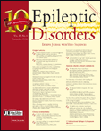Anatomo-electro-clinical correlations: the Great Ormond Street Hospital, UK Case Report - Case 05-2008: Early-onset symptomatic focal epilepsy: a dilemma in the timing of surgery
ABSTRACT
[Case records of Epileptic Disorders. Anatomo-electro-clinical correlations. Case 05-2008] We report the case of a six-year-old boy who presented in infancy with infantile spasms and left focal seizures. An MR scan at two months was suggestive of a right parietal cortical dysplasia, although this was less apparent on repeat scan at 11 months. The initial response to anti-epileptic medications was good; surgery was therefore deferred at that time. Subsequently, seizure control fluctuated and developmental progress was, on the whole, good. However, ultimately seizures increased despite changing the AED, and he began showing developmental problems. Surgery was reconsidered. Again, a repeat MR scan did not define the lesion well. Following full further evaluation, including functional imaging that still implicated the right parietal cortex, subdural grid and depth electrode monitoring were undertaken at 6.5 years, which located the ictal onset zone deep within the lesion. This enabled a right inferior parietal lobe resection to be performed. Four years post-surgery he remains seizure-free and has shown progress in development.




